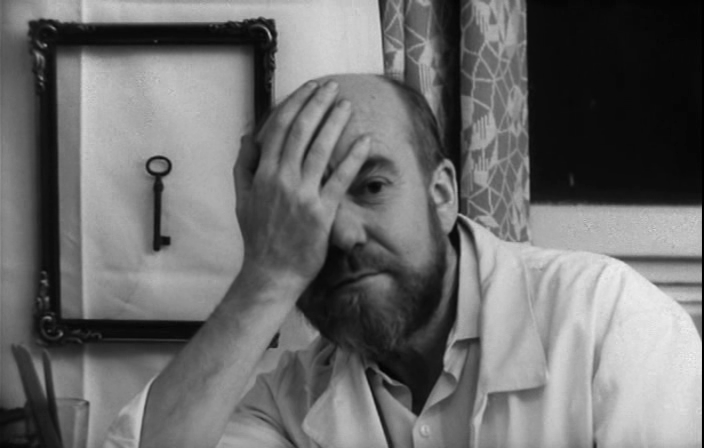
Slovakian director Dušan Hanák started creating feature films just after spring came to Prague in 1968. After this blossoming whatever movie he created, he knew that screenings will be forbidden, at least in Slovakia. „322“ was his debut feature movie and it was immediately banned. Secretly smuggled to the Manheim-Heidelberg cinema festival for young filmmakers it took the grand prize. No surprize that in such circumstances underlying themes of freedom are common for his movies.
In these circumstances of suppression and search of various ways for liberation, this could have been a cult film – though anything more than an underground cult film could exist then. Dušan Hanák created the complex alegory of society of that time and place, where questions on independence were so essential that one almost didn‘t feel it anymore, as one doesn‘t feel the air. From the very first seconds of movie viewer is exposed for oppositinion between what is human and what restricts human freedom. The human body, holding personal history, can be named part by part in dry latin names. Human beings are numbered, as well as events irreversibly impacting their lives (322 is code for cancer diagnosis). Steps they take can be controlled by voice from loudspeaker. Still, characters in “322“ don‘t cease to exist.
Lauko, middle aged chef, gets sick, though his doctor defers to tell him exact diagnosis. In the meantime calm and good hearted man is living his everyday life in uncertainty. And living in uncertainty about diagnosis can make your everyday life less everyday-like than a trip to Arapawa island by bike.
This movie is multilayered, developing more than one story, and more than one theme. Each of characters has his/her own postinion in the soviet city setting. There‘s Lauko, searching for peace, drifting from one old friend to another and asking: „are you ok with yourself?“. There‘s his ex-wife Marta, searching for happiness in things and beauty, desperately eager to be loved. There‘s her intelligent, though decadent and cynical lover Peter. And also there‘s the one, numebered ID Nr. BU-66 456963, introducing himself as Human Being. Some girls recognize him as Curly as well… Everyone is following his/her own path, moving to certain end.
In this black and white film creative freedom common for avant-garde and experimental artists can be enjoyed. This is not kind of freedom which would make viewer feel dumb and not getting an idea about what had just happened. Cinematograhy and scenography in „322“ creates a rich net and surprises viewer in new way again and again. This is somehow humorous movie, though personages are busy with themselves and don‘t try to make jokes. But there are things, which they don‘t see and don‘t know. For example, that there are titles appearing on screen from time to time. Sometmes they just tell the name of person we see on screen, sometimes they make ironic jokes about exaggerated desires and fantasies that characters are experiencing. Sometimes stopped motion is used, sometimes photography is aptly inserted. Camera is making jokes as it switches unruly to painted tapestry during serious dialogue, adding alternate meanings. In this way viewer becomes accomplice of director, smiling about lifes of heroes, and himself also. Scenography is as well ingeniously used, composing in scenes things which augments meanings about relations between people talking, or reveals states of mind. All this creates really specific, interesting aesthetics.
Musical decisions only enrichens this already pleasantly sophisticated net. There are scenes in slaughterhouse (when one is really happy that movie is in black and white) accompanied with elevated string music. Or Big Brother like situation, where people bitterly obeys for unknown voice from loudspeakers, goes with marches, making an sarcastic oppositinion between harsh reality and exalted rythims of totalitarian dream.
It was really reasonable to choose this movie as one of representing Slovak New Wave cinema in International Kaunas Cinema Festival programme. It contains critical realizm and lyrical humanism, common for both literature and cinema of Central and Eastern Europe. Action taking place among the most simple people shows that under some rules only the ones living in the margins can still maintain some kind of inner freedom and real lifes. Not accidently the most free person in „322“ is the one with ID Nr. BU-66 456963 written on the back of his white jacket.